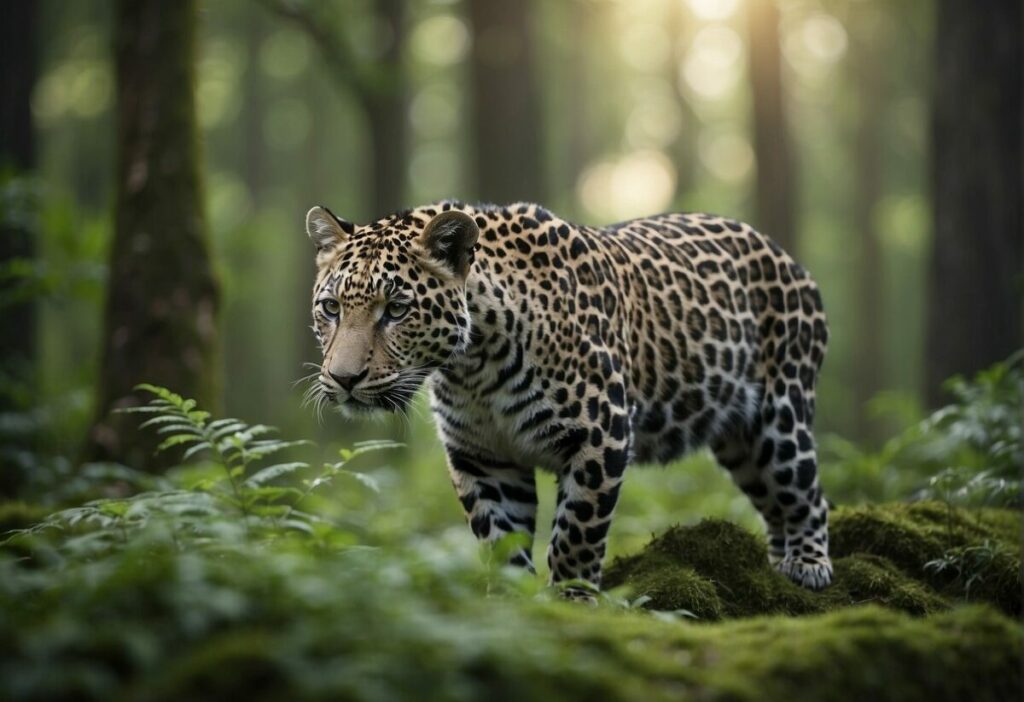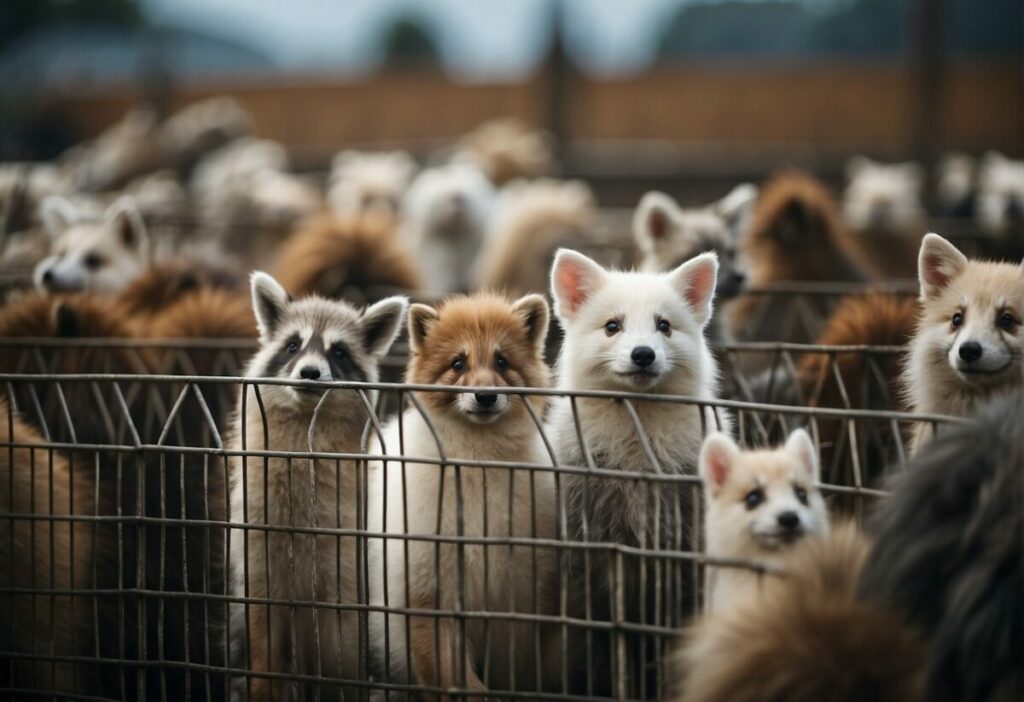The landscape of animal rights has seen a profound transformation over the years, driven by a growing recognition of non-human animals’ sentience—their ability to experience pain and pleasure. The movement, which champions animals’ moral and legal entitlements, extends back to philosophical discussions by figures like Aristotle and the Stoics.
Still, its modern form began to crystallize with pioneers such as Henry Stephens Salt, who advocated for the philosophical consideration of animals’ emotional lives. The animal rights movement has gradually shifted public perception, influencing laws and policies to encompass a more compassionate view toward animal welfare.

Achievements in animal rights have been substantial and varied, addressing concerns such as animal exploitation, testing, and cruelty. Legal strides have been made with legislation like the Animal Welfare Act and the formation of organizations like the Animal Legal Defense Fund, which work tirelessly to ensure legal protections for animals.
Furthermore, animal rights activists have effected change in industries that historically dismissed animal suffering, sparking a rise in veganism and a challenge to the doctrine of speciesism. This has led to decreased practices like vivisection and heightened standards for animal research, reflecting a society increasingly attuned to the ethical dimensions of its relationship with other species.
The influence of the animal rights movement is not limited to legal and ethical advancements; it has also permeated the environmental conversation, highlighting the interconnectedness of animal welfare and habitat preservation.
Protection efforts for wildlife and mammals underscore the importance of maintaining biodiversity and ensuring that all creatures can flourish within their natural ecosystems. This proud progression towards a world where animal rights are acknowledged and respected offers an optimistic outlook on the capacity for change when activism, compassion, and awareness converge.
Ban on Animal Testing for Cosmetics

In recent years, the movement against animal cruelty has taken significant strides in the cosmetics industry, where the practice of testing products on animals is increasingly outlawed.
European Union legislation has been at the forefront, establishing a ban on selling all cosmetics products and ingredients tested on animals as of 2013. This culmination of regulatory development initiated with a 2004 testing ban on finished cosmetic products.
The United States followed suit with states like California, New York, and ten others enacting laws prohibiting the sale of cosmetics involving animal testing. These legislative measures reflect a growing consensus on the inherent value of nonhuman animals and a push to remove them from the moral community where suffering for cosmetic research is no longer justified.
These bans are championed by various animal rights groups, including PETA, which have highlighted the unnecessary pain and harm inflicted on sentient beings. The bans have paved the way for alternative research methods that do not exploit animals, a crucial advancement in applied ethics within science.
The optimism in the animal rights movement stems from such legal recognition, as it marks a slow but steady shift in legal systems to consider animals as more than mere resources. These achievements not only diminish the exploitation and suffering faced by animals but also encourage innovators in the cosmetics industry to seek cruelty-free and vegan products.
The impact of these measures is profound, fostering a culture that respects animal rights while allowing for the advancement of science. The movement against cosmetic animal testing has set a strong precedence that reverberates through aspects of life far beyond just personal care, calling into question the use of animals in other areas, such as clothing and medicine.
Circus Animal Ban

The landscape of entertainment has been transformed as a direct result of the burgeoning advancement in animal welfare. Countries around the globe are united in their efforts to cease the utilitarian exploitation of animals in circuses, with significant bans implemented on the use of wild species for such purposes.
One notable achievement is the cessation of Ringling Bros. and Barnum & Bailey Circus—once dubbed the “Greatest Show on Earth.” Their closure symbolizes a monumental shift in public sentiment toward the use of animals in entertainment, recognizing the cruelty and suffering inflicted upon these sentient beings.
Several nations have taken philosophical and scientific principles influenced by thinkers such as Peter Singer to heart. They’ve moved beyond simply regarding animals as commodities for food and entertainment, integrating them into the moral community deserving of ethical considerations.
The ban on wild animals in circuses is a testament to this shift. For instance, Panama, Peru, and Singapore stand as champions with general bans on wild animal performances, recognizing animal rights as paramount.
Legislation Impact:
Country | Ban Specifics | Impact |
|---|---|---|
Panama | Nationwide ban on wild animals in circuses | Reduces exploitation and promotes animal dignity |
Paraguay | General ban on wild animals | Encourages respect for animal sentience |
Peru | General ban on wild animal | Ensures a life free from cruel performances |
Singapore | General ban on wild animals | Fosters advancements in animal protection |
These bans liberate animals from the cruel shackles of captivity and encourage the development of non-animal-based forms of entertainment. The positive effect on animal welfare sets a precedent that catalyzes further protection efforts globally.
As society continues to evolve, these legislative achievements give rise to optimism that the future holds a more compassionate world where animal exploitation becomes a relic of the past.
See Related: Is it Illegal to Kill an Armadillo in Texas?
Ivory Trade Ban

The international community has witnessed significant progress toward elephant conservation through the implementation of ivory trade bans. Outlawing the commercial trade of ivory represents a fusion of animal welfare ethics and legal action, achieving a milestone in animal rights history.
Legal Actions and Effects:
- United States (2016): Implemented a near-total ivory ban, signaling a firm stance on wildlife protection.
- China (2017): Enacted a similar comprehensive ban that catalyzed global change. Subsequent declines in elephant poaching rates in Africa and shrinkages in global illegal ivory trade volumes reflect the ban’s effectiveness.
Conservation Impact:
- Poaching Decrease: Statistics reported by CITES show a reduction in elephant poaching.
- Ivory Market Response: China witnessed a 26.6% reduction in online ivory advertisements post-ban, evidencing a shift in consumer behavior.
Moral and Philosophical Shifts:
- These bans highlight a growing philosophical consensus around the moral rights of species, indicating a deeper societal recognition of the intrinsic value of wildlife. The unified efforts signify a transformative period in animal protection and signal hope for preserving endangered species.
Animal Law and Welfare:
- The enforcement of these bans embodies the principles of animal law, extending legal rights to elephants to safeguard their welfare and survival. It encourages a proactive approach to animal rights, emphasizing the responsibility of humans to ensure the coexistence of all species.
Overall Sentiment:
The collaboration of countries, conservationists, and citizens in enforcing ivory trade prohibitions reflects a proud, optimistic step forward in the quest to secure a safe future for elephants.
The collective endeavor to uphold these majestic creatures’ legal and moral rights reinforces their significance in the world’s natural heritage, fortifying animal welfare philosophy and the spirit of global animal rights achievements.
SeaWorld’s Orca Breeding Program End

In 2016, after significant public and legal pressure from animal rights advocates, SeaWorld publicly declared its killer whale breeding program cessation. This decision represented a landmark victory for those concerned about the welfare and moral rights of sentient beings used for entertainment purposes.
SeaWorld’s shift was perceived as an acknowledgment of the complex needs of orcas, which, as a species, have suffered within the confines of captivity. Critics of the program had long argued that the conditions under which the orcas lived were cruel and not conducive to their physical or psychological health.
By ending the breeding program, SeaWorld took a pivotal step in aligning with a philosophy that places greater value on wildlife and the ethical treatment of animals.
Though the decision meant that the orcas then in SeaWorld’s care would be “the last generation” at their parks, it also opened the door to potential reforms in how these creatures are treated and housed.
The cessation reflects a growing public consciousness of the necessity to preserve natural ecosystems and respect the intrinsic rights of sentient beings.
The termination of the breeding program also spurred debate in the philosophical and legal person domains. Some argue for the recognition of cetaceans as legal non-human persons, which could fundamentally reshape our legal and moral obligations towards them.
The ripple effects of SeaWorld’s decision are substantial, encouraging movements towards more humane practices and greater conservation efforts.
Fur Farming Bans

Norway has set a remarkable precedent with legislation prohibiting fur farming by 2025. Similarly, Slovakia has committed to cease fur production by the same year, indicating a growing European consensus against the practice.
By 2026, Estonia will also join the movement to ban fur farming, reflecting an increasing recognition of the need to end animal suffering.
FOUR PAWS stands out in international animal welfare as an influential organization advocating animal rights. Their efforts have focused on exposing the cruelty inherent in fur farming, igniting global conversations on the matter.
Europe Takes the Lead
The United Kingdom and Austria were trailblazers in Europe, banning fur farming in 2000 and 2004, respectively. These bans directly resulted from advocacy by animal rights activists and groups, highlighting the role of persistent activism in shaping policy.
The Fur Free Europe European Citizens’ Initiative garnered over one million signatures, demonstrating robust public support against cruelty and the exploitation of sentient animals for clothing.
This initiative could lead to sweeping legal rights for animals across the EU, exemplifying a shift in moral and philosophical attitudes towards nonhuman animals and speciesism.
The Council of Europe’s recommendation on fur farming in 1999 was pivotal—it contributed to the gradual transformation of legal frameworks to recognize animals’ physical and emotional welfare.
Each ban diminishes the scope of animal cruelty and is a step towards a more ethical treatment of wildlife, reinforcing the belief that the exploitation of animal life for human gains is unacceptable.
These legislative achievements have had a significant impact, sparing countless animals from the pain and harm of fur farming. They symbolize a vital shift towards a more compassionate world that regards the suffering of animals as a concern parallel to human rights issues like veganism and utilitarianism, painting a proud and optimistic future for animal protection.
Wildlife Trafficking Laws

Wildlife trafficking poses a significant threat to the conservation of nature and animal welfare and biodiversity. In the fight against this illicit trade, the United States has implemented several key laws and regulations.
These legislative tools display a clear stance against exploitation and cruelty while bolstering the efforts of conservationists and animal rights activists.
The Endangered Species Act is a cornerstone of US efforts, providing a framework for protecting threatened and endangered species. It regulates activities involving imperiled species, including their trade, and mandates plans for their recovery.
Another critical piece of legislation, the Lacey Act, addresses the illegal trade of wildlife, making it a federal offense to trade in wildlife, fish, and plants that have been illegally taken, possessed, transported, or sold. This act also underscores the commitment to safeguarding global ecosystems and natural resources.
Similarly, the Migratory Bird Treaty Act protects migratory birds from various forms of exploitation, emphasizing the legal system’s role in promoting animal protection and welfare. These migratory birds, symbols of nature’s interconnectedness, benefit from prohibitions on hunting, trading, and other disruptions.
The Marine Mammal Protection Act acknowledges the unique importance of marine mammals and their habitats, enforcing regulations to prevent their harassment, hunting, capturing, or killing in US waters or by U.S. citizens on the high seas.
To reinforce global conservation and animal law, the US Fish and Wildlife Service also adheres to international agreements like the Convention on International Trade in Endangered Species of Wild Fauna and Flora (CITES).
This international agreement facilitates collaboration among countries to ensure international trade does not threaten species’ survival.
Through funding and strategic action, such as the initiatives outlined in the 2021 END Wildlife Trafficking Report, the US government dedicates resources to dismantling networks that perpetrate animal cruelty and speciesism.
These legal achievements are celebrated by animal rights activists and conservationists for their role in preserving wildlife, reflecting a growing global consciousness about the inherent value of all species and the rejection of their exploitation.
These laws also empower legal systems to appropriately penalize those who harm animals and the natural world, showcasing a proud and optimistic leap forward in animal protection.
See Related: Wildlife Trafficking Punishment
Animal Sentience Recognition

The legal acknowledgment of animal sentience has become a pivotal milestone in animal welfare.
In the United Kingdom, a groundbreaking legislative measure, the Animal Welfare (Sentience) Bill, elevated the status of animals in law by formally recognizing them as sentient beings capable of experiencing feelings such as pain and joy.
This recognition has profound philosophical underpinnings, embodying a shift towards acknowledging animals’ complex cognitive and emotional lives.
Species as varied as pigs, horses, and lions are now considered within a framework that respects their sentience. The bill’s passage reflects a prevailing consensus among philosophers and scientists regarding the rich emotional lives of mammals such as orangutans, chimpanzees, and gorillas, alongside a growing recognition of the sentience in other animals.
- Sentience in Legislation:
- UK: Animal Welfare (Sentience) Bill passed
- Impact: Legally mandates consideration of animal feelings
The law also established an Animal Sentience Committee, ensuring animal sentience is central to government policy. This committee could significantly influence the environment in which animals live by scrutinizing how governmental decisions consider animal welfare.
Across North America and Europe, there has been a burgeoning awareness of the necessity to provide legal rights to animals, reflecting their status as sentient, rational beings.
Although the journey is ongoing, these developments represent a major victory for recognizing animal sentience and suggest a more compassionate and humane future for all species.
Veganism Rise

The trajectory of veganism has seen a significant upswing, developing on the back of profound ethical, environmental, and health foundations. This diet abstains from all animal products, including those from cows, chickens, and sheep; it’s an expression of a philosophy that extends beyond food to a lifestyle that respects animal welfare and rejects speciesism.
Philosophical underpinnings, such as utilitarianism, have fostered this growth, the rationale being that the pleasure derived from animal products does not justify the suffering caused. This sentiment echoes religious philosophies like Buddhism, which advocates for a moral community inclusive of all species.
Critics historically dismissed veganism as a fringe movement. However, a pivot has occurred with animal rights and animal liberation movements gaining traction. The rise in veganism is often celebrated as achieving ethical progress, reducing prejudice, and expanding society’s moral horizon.
Environmental Impact
- Reduction in carbon footprint: Adopting vegan diets can significantly lower the environmental impact of food production.
- Conservation of resources: Plant-based diets are resource-efficient, preserving water and reducing land use.
Animal Welfare
- Animal rights: The movement has heightened public awareness of the rights of animals, leading to legal reforms in some regions.
- Speciesism reduction: The acknowledgment of speciesism as a form of prejudice is more widespread.
Health Achievements
- Public health: Plant-based diets have been linked with numerous health benefits, reducing the risk of chronic diseases.
- Food innovation: The rise of veganism has spurred a wave of new, plant-based food options catering to diverse palates and nutritional needs.
The rise of veganism has demonstrated both a historical shift in societal attitudes and tangible progress in the fields of environmental advocacy, public health, and ethical consideration. The optimistic view upheld by advocates is that veganism’s growth represents a rational and compassionate response to contemporary society’s complex issues.
See Related: Groundbreaking Wildlife Conservation Efforts
Conservation Funding Increases

Legal Rights and Animal Welfare:
Legislative developments in recent years underscore a growing commitment to animal welfare. Above all, the US Supreme Court’s affirmation of California’s Prop 12 stands out.
This legal milestone not only strengthens cage-free standards within California but also sets a precedent by regulating out-of-state sales of animal products. It signals a mounting recognition of animal rights as integral to our legal frameworks.
Ecosystem Protection:
Resource allocation for ecosystems saw significant progress with strategic conservation funding. For instance, the ARPA for Life initiative demonstrated this by securing a $215 million fund to protect and manage areas in the Brazilian Amazon.
This financial impetus plays a crucial role in sustaining vibrant ecosystems.
Species Conservation Efforts:
The commitment to species conservation is further highlighted by Nepal’s success in tripling its wild tiger population. Driven by targeted funds and community efforts, this achievement illustrates how dedicated resources can result in tangible gains for endangered species.
Widening the Environmental Ethic:
The broader environmental and conservation movement, which often intersects with ideals of veganism and Darwinism, recognizes the intrinsic value of all life forms. Financial uplift in various sectors — from animal sanctuaries to wild habitat preservations — reiterates society’s evolving ethos that cherishes and strives to defend biodiversity.
One can see a burgeoning coalition between fiscal support and conservation targets, drawing a bright and hopeful picture for the future of wildlife and the environment. The increase in conservation funding is a testament to a world ready to allocate the necessary resources to uphold the sanctity of life on Earth.

